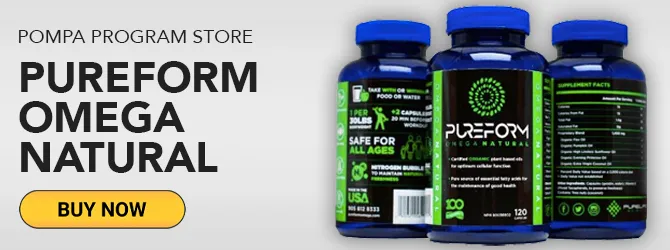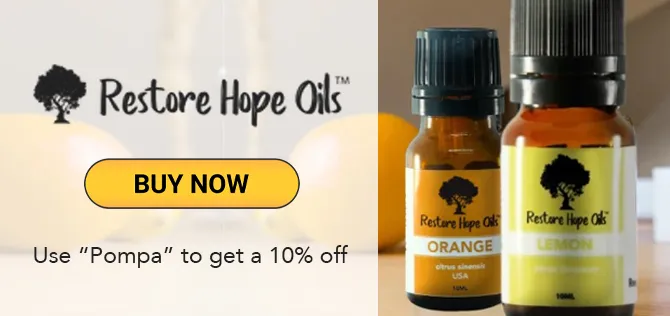R1 – Remove The Source Of Toxins
Fix the cell and you will get well.
When our cells are not functioning properly, our overall health suffers, leading to chronic disease. The first step of fixing the cell is to remove the source of toxins responsible for cellular dysfunction. By addressing the toxins that made us sick in the first place, we are removing the root cause of health issues at the most basic level, the cellular level.
Toxins Are All Around Us
Toxins come from a variety of sources in the air we breathe, the food we eat, the medical procedures we undergo, and even the products we use on a daily basis. These toxins accumulate in our cells over time, leading to cellular dysfunction and ultimately, various health problems like hormone issues and autoimmune conditions.1 2
The first step towards fixing the cell is to identify and remove the sources of toxins. Before anything else, we must stop or at least significantly reduce the influx of toxins that are flowing into our bodies. After that, we can focus on removing the cellular toxins that have built up within us over decades.
The three main toxins responsible for systemic cellular dysfunction include heavy metals, exposure to mold, and hidden infections.3 4 5 Other toxins that degrade cellular function include BPA, phthalates, bromine, and chlorine, to name a few.6 7 8 9
If we ever want to experience true health, we must consciously avoid toxins.
Remove The Source Of Toxins – Heavy Metals
Heavy metals include lead, mercury, arsenic, and cadmium. Heavy metal contamination is widespread and occurs through various sources such as industrial waste, agricultural runoff, and even natural processes like erosion. Heavy metals are often released into the air during mining, smelting, and the burning of fossil fuels.10
Remove The Source Of Toxins – Mercury In Seafood
One of the most common ways people are exposed to mercury is through consuming contaminated fish and seafood. Mercury can accumulate in the bodies of fish and other marine life, especially larger predatory species like tuna, swordfish, and shark. This is because they consume smaller fish that have already absorbed mercury from the water.11
Remove The Source Of Toxins – Mercury Amalgam Fillings
Mercury amalgam fillings, also known as silver fillings, have been used for decades as a popular choice for dental restorations. They are made up of a mixture of metals, including silver, tin, copper, and approximately 50% mercury.12
The major issue with mercury amalgam fillings is that they continuously release small amounts of mercury vapor. This can happen through normal chewing and grinding of teeth, as well as exposure to hot liquids and acidic foods. The released mercury vapor is then absorbed into the body through the lungs and reaches different organs, including the brain.13
Mercury is a neurotoxin that has been linked to cognitive issues such as memory loss, confusion, and difficulty concentrating. It also affects the immune system, leading to autoimmune disorders and allergies. In addition, mercury has been shown to have negative impacts on the cardiovascular and respiratory systems.14

Remove The Source Of Toxins – Lead
Lead is also highly toxic to humans, causing serious health issues when ingested or inhaled. While lead-based paints were banned in the 1970s and leaded gasoline was phased out in the 1990s, lead exposure is still a major concern.15 16
Lead can leach into drinking water from old pipes or soldered joints, especially in older buildings. This is more common in areas with acidic or soft water, as it corrodes the pipes more quickly. The longer the water sits in contact with lead, the higher its levels will be.17 Lead exposure is particularly concerning in urban areas where there are many old buildings with peeling lead-based paint and potential sources of pollution.
Lead contamination in soil is a major concern for both human health and the environment. It originates from various sources such as industrial activities, improper disposal of lead-containing materials, or using fertilizers that contain high levels of lead.18
Lead is often found in various consumer products such as cosmetics, toys, jewelry, and even food containers. This is especially concerning for children who are more susceptible to lead poisoning due to their smaller size and tendency to put objects in their mouths.19
How Heavy Metals Affect Cells
The cellular membrane is a lipid bilayer (2 layers of fat) that surrounds cells and gives them their shape. When heavy metals are present, they result in cellular membrane inflammation that changes the basic structure of the lipid bilayer resulting in hormone receptor problems, autoimmune conditions, and a long list of chronic diseases. The only way to deal with all of these issues simultaneously is to remove heavy metals from the cells and out of the body.20
Removing Heavy Metals From The Cells
The process of removing heavy metals from the body requires dedication and patience, as the detox is measured in years, not months. My goal is to teach my clients the process of detoxification so they can remove the heavy metals from their cells and get their health back.
Heavy Metal Blood Tests Don’t Tell The Whole Story
Realize that typical heavy metal tests don't actually show intracellular levels of heavy metals, but rather blood levels. This means that the results obtained for heavy metal levels can be misleading.21
Removing Heavy Metals From The Cells – Chelation
Chelators are substances that bind to and excrete heavy metals. However, there are only a few ideal chelators that completely bind to and remove heavy metals from the body without redistributing them to other tissues. It is imperative to use the correct heavy metal chelators at the proper intervals, and for long enough to finally remove these horrible toxins from the body.22
Remove The Source Of Toxins – Mold Exposure
Toxic mold exposure is the second main source of toxins responsible for systemic cellular dysfunction. Exposure to toxic mold can occur through inhalation, ingestion, or even skin contact.23
One of the most common ways people are exposed to toxic mold is through their homes. Mold can grow in areas with high moisture, such as bathrooms, basements, and attics. If left untreated, mold can spread quickly and release harmful toxins into the air we breathe.24
Inhaling these toxins often leads to a variety of health issues, ranging from mild allergies to more serious respiratory problems. Some common symptoms of toxic mold exposure include coughing, sneezing, itchy eyes, runny nose, and throat irritation. In severe cases, toxic mold exposure can even cause lung infections or exacerbate existing respiratory conditions.25
Research has shown that prolonged exposure to mold toxins have neurological impacts, such as memory loss, difficulty concentrating, and mood changes. In some cases, toxic mold exposure has even been linked to chronic fatigue syndrome and depression.26 27
Removing The Source Of Toxic Mold
If you suspect that your home may have a mold problem, it's important to contact a professional for proper removal and remediation. However, many people aren’t even aware that they have a mold problem so it is important to have your house or business professionally analyzed for mold. Attempting to remove mold on your own can actually make the situation worse, as disturbing the mold causes it to release more toxins into the air.
Remove The Source Of Toxins – Hidden Infections
Hidden infections refer to any type of infection that is not easily detectable. This can include chronic sinus infections, undiagnosed dental infections, and even gut imbalances such as SIBO (small intestinal bacterial overgrowth). These hidden infections cause a wide range of symptoms, from fatigue and brain fog to joint pain and digestive issues.28 29
Hidden infections can fly under the radar for years. Additionally, many people attribute their symptoms to other causes and don't consider the possibility of an underlying infection.
Remove The Source Of Toxins – Hidden Infections – Root Canals
Root canals are a common dental procedure that is used to save severely damaged or infected teeth. While it may seem like a solution for preserving your natural tooth, there is growing evidence that root canals may actually be harmful to your health.30
One of the main concerns with root canals is the potential for hidden infections. When a tooth becomes infected, the bacteria can travel down through the root canal and into the surrounding tissue, leading to a chronic infection.31
These hidden infections are particularly concerning because they release toxins into the bloodstream. These toxins compromise the immune system and lead to a variety of health issues, such as fatigue, joint pain, and even autoimmune diseases. Studies have also shown the connection between root canals and diseases such as heart disease and stroke.32
Remove The Source Of Toxins – Discover Hidden Infections – Cone Beam Computed Tomography
One of the most effective ways to detect hidden infections is through Cone Beam Computed Tomography (CBCT). CBCT is a specialized type of X-ray technology that produces three-dimensional images of the body's structures. This advanced imaging technique allows us to see beyond what a regular X-ray can capture, providing a more detailed and accurate diagnosis.
CBCT is particularly useful in detecting hidden infections in the jaw and oral cavity. CBCT scans can help identify underlying infections that may be causing this inflammation, allowing for targeted treatment to remove the source of toxins.33
R1 – Remove The Source Of Toxins
Removing the source of toxins is the first step in addressing chronic illnesses. As soon as we remove the root of our health problems, we can move on to the next step.
R2 – Regenerating The Cellular Membrane
References
1 Yang O, Kim HL, Weon JI, Seo YR. Endocrine-disrupting Chemicals: Review of Toxicological Mechanisms Using Molecular Pathway Analysis. J Cancer Prev. 2015 Mar;20(1):12-24. doi: 10.15430/JCP.2015.20.1.12. PMID: 25853100; PMCID: PMC4384711.
2 Kharrazian D. Exposure to Environmental Toxins and Autoimmune Conditions. Integr Med (Encinitas). 2021 Apr;20(2):20-24. PMID: 34377090; PMCID: PMC8325494.
3 Balali-Mood M, Naseri K, Tahergorabi Z, Khazdair MR, Sadeghi M. Toxic Mechanisms of Five Heavy Metals: Mercury, Lead, Chromium, Cadmium, and Arsenic. Front Pharmacol. 2021 Apr 13;12:643972. doi: 10.3389/fphar.2021.643972. PMID: 33927623; PMCID: PMC8078867.
4 Kraft S, Buchenauer L, Polte T. Mold, Mycotoxins and a Dysregulated Immune System: A Combination of Concern? Int J Mol Sci. 2021 Nov 12;22(22):12269. doi: 10.3390/ijms222212269. PMID: 34830149; PMCID: PMC8619365.
5 Suprewicz Ł, Tokajuk G, Cieśluk M, Deptuła P, Sierpińska T, Wolak P, Wollny T, Tokajuk J, Głuszek S, Piktel E, Bucki R. Bacteria Residing at Root Canals Can Induce Cell Proliferation and Alter the Mechanical Properties of Gingival and Cancer Cells. Int J Mol Sci. 2020 Oct 24;21(21):7914. doi: 10.3390/ijms21217914. PMID: 33114460; PMCID: PMC7672538.
6 Wu X, Yang X, Geng X, Ji X, Zhang X, Yue H, Li G, Sang N. Bisphenol A Analogs Induce Cellular Dysfunction in Human Trophoblast Cells in a Thyroid Hormone Receptor-Dependent Manner: In Silico and In Vitro Analyses. Environ Sci Technol. 2022 Jun 21;56(12):8384-8394. doi: 10.1021/acs.est.1c08161. Epub 2022 Jun 6. PMID: 35666658.
7 Wang Y, Qian H. Phthalates and Their Impacts on Human Health. Healthcare (Basel). 2021 May 18;9(5):603. doi: 10.3390/healthcare9050603. PMID: 34069956; PMCID: PMC8157593.
8 Shakil S, Masjoan Juncos JX, Mariappan N, Zafar I, Amudhan A, Amudhan A, Aishah D, Siddiqui S, Manzoor S, Santana CM, Rumbeiha WK, Salim S, Ahmad A, Ahmad S. Behavioral and Neuronal Effects of Inhaled Bromine Gas: Oxidative Brain Stem Damage. Int J Mol Sci. 2021 Jun 12;22(12):6316. doi: 10.3390/ijms22126316. PMID: 34204780; PMCID: PMC8231550.
9 Isabella Santos de Genaro, Francine Maria de Almeida, Fernanda Degobbi Tenorio Quirino dos Santos Lopes, Deborah De Camargo Hizume Kunzler, Bruna Gabryela Busoletto Tripode, Adriana Kurdejak, Bruna Nakamura Cordeiro, Renata Pandolpho, Mariangela Macchione, Thayse Regina Brüggemann, Rodolfo Paula Vieira, Milton Arruda Martins, Iolanda de Fátima Lopes Calvo Tibério, Beatriz Mangueira Saraiva-Romanholo, Low-dose chlorine exposure impairs lung function, inflammation and oxidative stress in mice, Life Sciences, Volume 267, 2021, 118912, ISSN 0024-3205, https://doi.org/10.1016/j.lfs.2020.118912
10 Briffa J, Sinagra E, Blundell R. Heavy metal pollution in the environment and their toxicological effects on humans. Heliyon. 2020 Sep 8;6(9):e04691. doi: 10.1016/j.heliyon.2020.e04691. PMID: 32964150; PMCID: PMC7490536.
11 Barone G, Storelli A, Meleleo D, Dambrosio A, Garofalo R, Busco A, Storelli MM. Levels of Mercury, Methylmercury and Selenium in Fish: Insights into Children Food Safety. Toxics. 2021 Feb 20;9(2):39. doi: 10.3390/toxics9020039. PMID: 33672494; PMCID: PMC7923435.
12 Sjursen TT, Lygre GB, Dalen K, Helland V, Laegreid T, Svahn J, Lundekvam BF, Björkman L. Changes in health complaints after removal of amalgam fillings. J Oral Rehabil. 2011 Nov;38(11):835-48. doi: 10.1111/j.1365-2842.2011.02223.x. Epub 2011 Apr 23. PMID: 21517933; PMCID: PMC3229679.
13 Homme KG, Kern JK, Haley BE, Geier DA, King PG, Sykes LK, Geier MR. New science challenges old notion that mercury dental amalgam is safe. Biometals. 2014 Feb;27(1):19-24. doi: 10.1007/s10534-013-9700-9. Epub 2014 Jan 14. PMID: 24420334; PMCID: PMC3905169.
14 Pollard KM, Cauvi DM, Toomey CB, Hultman P, Kono DH. Mercury-induced inflammation and autoimmunity. Biochim Biophys Acta Gen Subj. 2019 Dec;1863(12):129299. doi: 10.1016/j.bbagen.2019.02.001. Epub 2019 Feb 10. PMID: 30742953; PMCID: PMC6689266.
15 Jacobs DE, Clickner RP, Zhou JY, Viet SM, Marker DA, Rogers JW, Zeldin DC, Broene P, Friedman W. The prevalence of lead-based paint hazards in U.S. housing. Environ Health Perspect. 2002 Oct;110(10):A599-606. doi: 10.1289/ehp.021100599. PMID: 12361941; PMCID: PMC1241046.
16 Michael J. McFarland, Matt E. Hauer, Aaron Reuben. Half of US population exposed to adverse lead levels in early childhood. Proceedings of the National Academy of Sciences, 2022; 119 (11) DOI: 10.1073/pnas.2118631119
17 Rabin R. The lead industry and lead water pipes “A Modest Campaign”. Am J Public Health. 2008 Sep;98(9):1584-92. doi: 10.2105/AJPH.2007.113555. Epub 2008 Jul 16. PMID: 18633098; PMCID: PMC2509614.
18 Alengebawy A, Abdelkhalek ST, Qureshi SR, Wang MQ. Heavy Metals and Pesticides Toxicity in Agricultural Soil and Plants: Ecological Risks and Human Health Implications. Toxics. 2021 Feb 25;9(3):42. doi: 10.3390/toxics9030042. PMID: 33668829; PMCID: PMC7996329.
19 Hauptman M, Bruccoleri R, Woolf AD. An Update on Childhood Lead Poisoning. Clin Pediatr Emerg Med. 2017 Sep;18(3):181-192. doi: 10.1016/j.cpem.2017.07.010. PMID: 29056870; PMCID: PMC5645046.
20 Sun X, Deng Y, Fang L, Ni M, Wang X, Zhang T, Chen Y, Cai G, Pan F. Association of Exposure to Heavy Metal Mixtures with Systemic Immune-Inflammation Index Among US Adults in NHANES 2011-2016. Biol Trace Elem Res. 2023 Oct 10. doi: 10.1007/s12011-023-03901-y. Epub ahead of print. PMID: 37817047.
21 Zajac L, Johnson SA, Hauptman M. Doc, can you test me for “toxic metals”? Challenges of testing for toxicants in patients with environmental concerns. Curr Probl Pediatr Adolesc Health Care. 2020 Feb;50(2):100762. doi: 10.1016/j.cppeds.2020.100762. Epub 2020 Feb 27. PMID: 32115369; PMCID: PMC7230008.
22 Sears ME. Chelation: harnessing and enhancing heavy metal detoxification–a review. ScientificWorldJournal. 2013 Apr 18;2013:219840. doi: 10.1155/2013/219840. PMID: 23690738; PMCID: PMC3654245.
23 Kraft S, Buchenauer L, Polte T. Mold, Mycotoxins and a Dysregulated Immune System: A Combination of Concern? Int J Mol Sci. 2021 Nov 12;22(22):12269. doi: 10.3390/ijms222212269. PMID: 34830149; PMCID: PMC8619365.
24 Harding CF, Pytte CL, Page KG, Ryberg KJ, Normand E, Remigio GJ, DeStefano RA, Morris DB, Voronina J, Lopez A, Stalbow LA, Williams EP, Abreu N. Mold inhalation causes innate immune activation, neural, cognitive and emotional dysfunction. Brain Behav Immun. 2020 Jul;87:218-228. doi: 10.1016/j.bbi.2019.11.006. Epub 2019 Nov 18. PMID: 31751617; PMCID: PMC7231651.
25 Sung AH, Martin S, Phan B, Benigno M, Stephens J, Chambers R, Aram JA. Patient Characteristics and Risk Factors in Invasive Mold Infections: Comparison from a Systematic Review and Database Analysis. Clinicoecon Outcomes Res. 2021 Jun 25;13:593-602. doi: 10.2147/CEOR.S308744. PMID: 34211287; PMCID: PMC8241810.
26 Brewer JH, Thrasher JD, Straus DC, Madison RA, Hooper D. Detection of mycotoxins in patients with chronic fatigue syndrome. Toxins (Basel). 2013 Apr 11;5(4):605-17. doi: 10.3390/toxins5040605. PMID: 23580077; PMCID: PMC3705282.
27 Potera C. Molding a link to depression. Environ Health Perspect. 2007 Nov;115(11):A536. doi: 10.1289/ehp.115-a536a. PMID: 18007972; PMCID: PMC2072855.
28 Murray CA, Saunders WP. Root canal treatment and general health: a review of the literature. Int Endod J. 2000 Jan;33(1):1-18. doi: 10.1046/j.1365-2591.2000.00293.x. PMID: 11307468.
29 Achufusi TGO, Sharma A, Zamora EA, Manocha D. Small Intestinal Bacterial Overgrowth: Comprehensive Review of Diagnosis, Prevention, and Treatment Methods. Cureus. 2020 Jun 27;12(6):e8860. doi: 10.7759/cureus.8860. PMID: 32754400; PMCID: PMC7386065.
30 Wong J, Manoil D, Näsman P, Belibasakis GN, Neelakantan P. Microbiological Aspects of Root Canal Infections and Disinfection Strategies: An Update Review on the Current Knowledge and Challenges. Front Oral Health. 2021 Jun 25;2:672887. doi: 10.3389/froh.2021.672887. PMID: 35048015; PMCID: PMC8757850.
31 Sobieszczański J, Mertowski S, Sarna-Boś K, Stachurski P, Grywalska E, Chałas R. Root Canal Infection and Its Impact on the Oral Cavity Microenvironment in the Context of Immune System Disorders in Selected Diseases: A Narrative Review. J Clin Med. 2023 Jun 17;12(12):4102. doi: 10.3390/jcm12124102. PMID: 37373794; PMCID: PMC10298853.
32 Aloutaibi YA, Alkarim AS, Qumri EM, Almansour LA, Alghamdi FT. Chronic Endodontic Infections and Cardiovascular Diseases: Does the Evidence Support an Independent Association? Cureus. 2021 Nov 24;13(11):e19864. doi: 10.7759/cureus.19864. PMID: 34976491; PMCID: PMC8712192.
33 Bisla S, Gupta A, Singh H, Sehrawat A, Shukla S. Evaluation of relationship between odontogenic infections and maxillary sinus changes: A Cone Beam Computed Tomography-based study. J Oral Biol Craniofac Res. 2022 Sep-Oct;12(5):645-650. doi: 10.1016/j.jobcr.2022.08.001. Epub 2022 Aug 11. PMID: 36045940; PMCID: PMC9421310.














